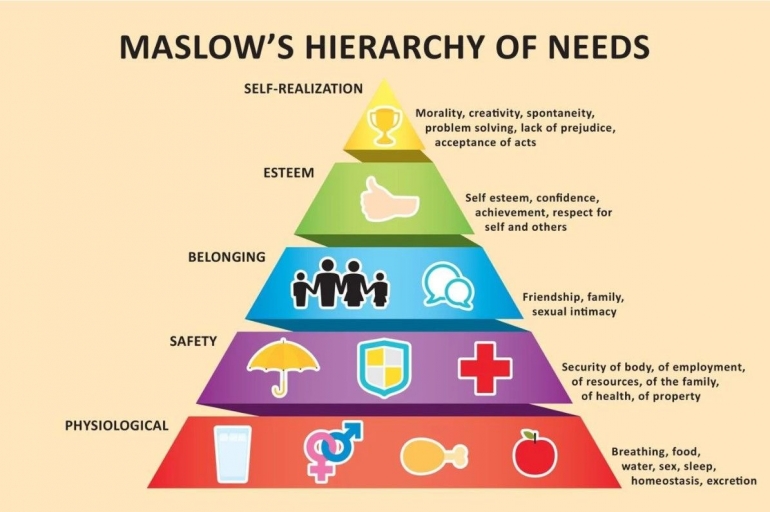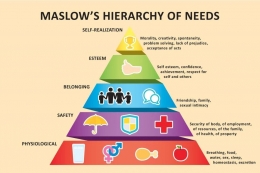First, I will describe Maslow's pyramid in a consistent manner, and then I will reflect on whether I have completed all of the levels of the pyramid and which one I am on.
What is Abraham Maslow's background?
He was an American psychologist who was born in Brooklyn, New York, in 1908. He is best known as one of the founders and main exponents of humanistic psychology, a psychological current that postulates the existence of a fundamental human tendency toward mental health that manifests itself as a series of search processes for self-actualization and self-realization. In psychology, he is commonly referred to as a "third force," and his viewpoint is theoretically and technically situated between the paradigms of behaviorism and psychoanalysis.
His most recent publications establish him as a forerunner in transpersonal psychology. Maslow's pyramid, which I shall now discuss, is the most theoretical progression.
Maslow's hierarchy of needs is a hypothesis presented in his 1943 book A Theory of Motivation, which he later extended. He rose to prominence not just in the discipline of psychology but also in the industry of marketing or advertising. Maslow develops a hierarchy of human needs in his theory, arguing that when the most fundamental needs are met (at the bottom of the pyramid), humans develop greater needs and desires (at the top of the pyramid).
Now I'll go into how you connect each step with examples:
Basic physiological needs:
Are required to sustain homeostasis (related to survival)
The necessity to breathe: drink water and eat
The necessity to sleep (rest) and remove waste from the body
The necessity to avoid discomfort
Body temperature must be maintained in a warm atmosphere or wearing clothes.
Needs for safety and security
They appear when physiological demands are met. They are talking about feeling protected and comfortable.
Physical security (ensuring the body's integrity) and health (ensuring the proper functioning of the body).
The requirement for resource security (house, money, car, etc.)
Housing requires o protection
Our social needs (affiliation) are those that are tied to our social character.
The purpose of relationships (friendship, partner, colleagues, or family.
Acceptance in society.
Self-esteem is required (recognition).
Maslow defined two sorts of esteem needs: extremely high and low.
High self-esteem is concerned with the desire for self-esteem and involves feelings such as confidence, competence, mastery, success, independence, and freedom.
Low self-esteem is characterized by a need for attention, praise, recognition, notoriety, position, dignity, celebrity, glory, and even dominance.
The need for self-esteem is the need for balance in the human being, since it is the essential foundation for the person to become the man of success that he has always desired, or a man condemned to failure because he cannot do anything on his own.
Self-realization
This final stage is a little different, and Maslow labeled it with various terms: "growth motivation," "need to be," and "self-actualization."
It is at the summit of the hierarchy of the human being's highest psychological wants, and it is through their satisfaction that a justification or true purpose to existence is established through the possible growth of activity. It is attained after all of the preceding levels have been reached and finished, or to some extent.
Where am I?
I believe I occupy practically all of the levels in the pyramids, particularly the fundamental ones since their names imply they are requirements that everyone has, as they are to sleep, drink, and eat, but I do not always fully satisfy these needs.
For example, according to the National Sleep Foundation's sleep specialists, we should sleep a particular number of hours based on our age, and in my case and the case of many adults, we should sleep between 7-9 hours, not less than 6, and not more than 10-11. Well, I sleep fewer than those hours; I do not have a specific control over the number of hours that I sleep daily; this varies.
On the other hand, according to the III National Hydration Congress, women and men should drink 2 liters and 2.5 liters per day, respectively, but I honestly do not meet these amounts since I do not want to drink so much. I consume water based on my own body's needs. I mean that I drink according to how my body tells me to, not to meet a quota. And eating is another aspect that I do not fully stick to, as I undertake intermittent fasting a few times a week. But I don't snack; I only nibble when I'm hungry, and I do it with fruits. I know I should eat more because these are basic essentials.
On the second level, I consider my physiological needs to be met. I am feeling protected and secure. On the other side, there is a third level, which is social wants, which, if satisfied, fulfill practically all the demands since these are love, affection, friendship, and social approval.
The fourth level is self-esteem. I don't believe I have high or low self-esteem, but it is true that depending on the scenario and how I am feeling at the time, I feel one way or the other. And last, everyone wants to be successful, but success does not come without effort and struggling to attain one's goals.
I'll end this essay by encouraging you to read more of my thoughts and views on various teaching styles. Until next time.










